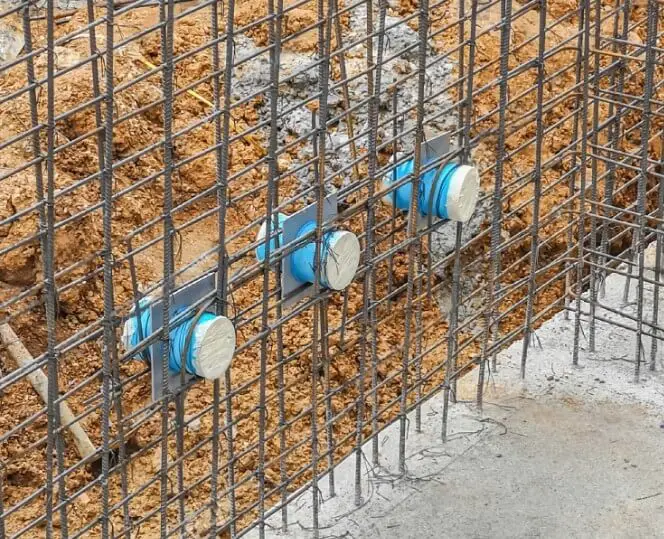What is the Method Statement for Sleeves and Puddle Flanges Installation?
A Method Statement for Sleeves and Puddle Flanges Installation is a document that outlines the step-by-step procedure for installing sleeves and puddle flanges in a construction or plumbing project. It provides detailed instructions on how to carry out these installations safely and efficiently.
Table of Contents
Purpose
This method statement works for sleeves and puddle flanges installation in all relevant locations of the construction project.
Scope
The provision and fitting of sleeves and puddle flanges for various purposes in accordance with the project specifications.
Reference
Approved shop drawings for the plumbing systems
Project Specifications
Project Quality Plan
Approved Material Submittal
Definitions
PQP Project Quality Plan
PSP Project Safety Plan
HSE Health, Safety and Environment
MS Method Statement
ITP Inspection Test Plan
QA/QC Quality Assurance / Quality Control
WIR Work Inspection Request
MIR Material Inspection Request
AFC Approved For Construction
Puddle Flanges: where pipe work passes through the building’s exterior walls or where trenches is located. Ground level puddle flanges must be provided, and they must be made of the same material as the pipe construction they are a part of.
UPVC Class E: Ultra polyvinyl chloride for outdoor sewage and drainage works according to BS 3505.
ABS uPVC : unplasticized Polyvinyl chloride for the interior location
HDPE High Density Polyethylene to comply with DIN 19535 for chemical waste usage

Responsibilities
Project Manager
Construction Manager
Site Engineer
QA/QC Engineer (MEP)
Site Foreman
Safety Officer
Storekeeper
Equipment and Tools
Toolbox
Gloves
Chipping hammer
Goggles
Spanner
Portable grinder
Procedure
During the installation of the puddle flange and sleeves, the attached risk assessment should be taken into account, and the appropriate controls should be put in place in accordance with recommendations.
Puddle flanges and sleeves must be installed in accordance with authorized shop drawings, submittals, and MIR.
Material Handling & Storage
All materials must be handled correctly and kept in a clean, dry environment throughout storage.
Installation of sleeves and a puddle flange
Sleeve installation
Mark the center and invert level of the Sleeve on the reinforcement / steel bars in accordance with the authorized shop drawings and invert Level.
Contractor for steel fixing to bend and clear the precise location for putting sleeve.
Position the sleeve in the steel region after the location is clear.
Check the level and alignment once the sleeve is in the correct location.
To prevent any misalignment while pouring concrete, tie the sleeves with the appropriate steel wires. Clearance for the civil contractor to close the shutter with precise holes matching the sleeve and proceed with concrete pouring.
Puddle Flange Installation
As shown in the following table, there are various types of puddle flanges:
| Application | Type of Pipe | Installation Area/Location |
| Water supply system | HDPE-SDR-11,PN 16 | Pipeworks passes thru external walls |
| Chemical waste system | HDPE-DIN 19535 | Pipeworks passes thru external walls |
| Drainage system | uPVC Class E, BS 3505 | Pipeworks passes thru external walls |
| Fire Fighting system | Stainless Steel 316-Seamless Type | Pipeworks passes thru external walls |
| Fire Fighting system | HDPE-SDR-09,PN 20-Seamless Type | Pipeworks passes thru external walls |
| Water supply system | Stainless Steel 316 | Pipeworks passes thru water tank walls |
| Fuel supply system | Carbone Steel ASTM Grade B-Seamless Type | Pipeworks passes thru external walls |
Mark the center and invert level of the puddle flange on the reinforcement/steel bars in accordance with the authorized shop drawings and the invert level.
Contractor for steel fixing to bend and clear precise space for puddle flange installation
Position the puddle flange in the steel area once the flange is clear.
Recheck the level and alignment after placing the puddle flange in the correct location.
Give the go-ahead for the civil contractor to close the shutter with precise holes that match the puddle flange and proceed with concrete pouring.
Before being incorporated into the structure, the exterior was covered with two coats of bituminous paint.
Bolts, nuts, and washers must be made of S. Steel 316.
To be utilized between two distinct flanges is die electric material.
Testing and Inspection
To ensure the effectiveness of the sleeves and puddle flanges installation, testing and inspection are necessary. Perform the following checks:
- Conduct a visual inspection of the installed sleeves and puddle flanges for any visible defects or misalignments.
- Perform a hydrostatic pressure test to verify the watertightness of the puddle flanges.
- Inspect the surrounding areas for any signs of leakage or moisture.
FAQs
- What are sleeves and puddle flanges? Sleeves are conduits that allow pipes to pass through structural elements, while puddle flanges prevent water leakage around pipe penetrations.
- Why is proper installation of sleeves and puddle flanges important? Proper installation ensures the integrity and functionality of piping systems, preventing leaks and maintaining structural stability.
- What materials are required for sleeve and puddle flange installation? The materials include sleeves, puddle flanges, reinforcement bars, concrete mix, cutting tools, measuring tools, and personal protective equipment (PPE).
- What tests are performed after installation? Visual inspections, hydrostatic pressure tests, and moisture checks are conducted to ensure the effectiveness of the installation.
tag: # Method Statement for Sleeves and Puddle Flanges Installation

